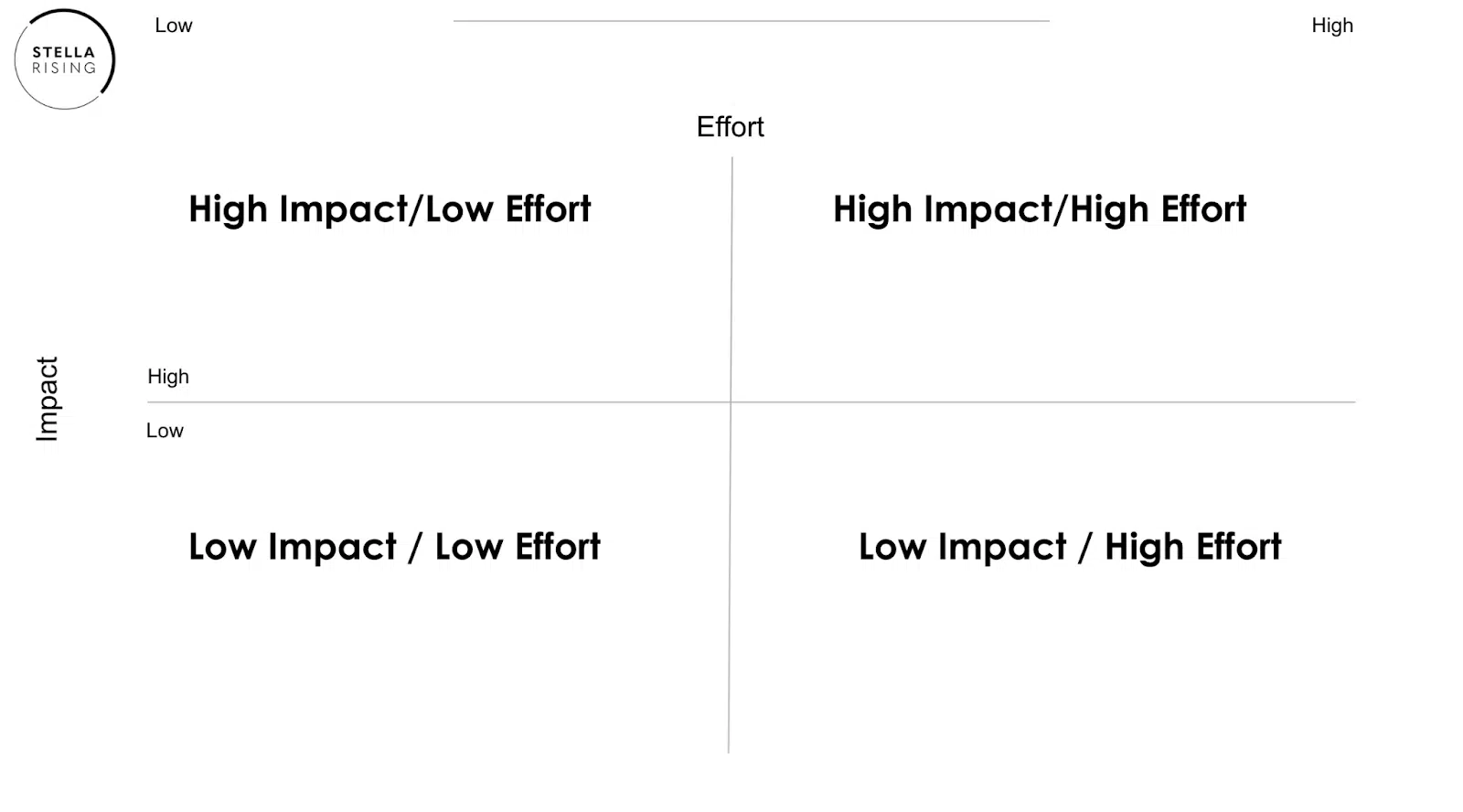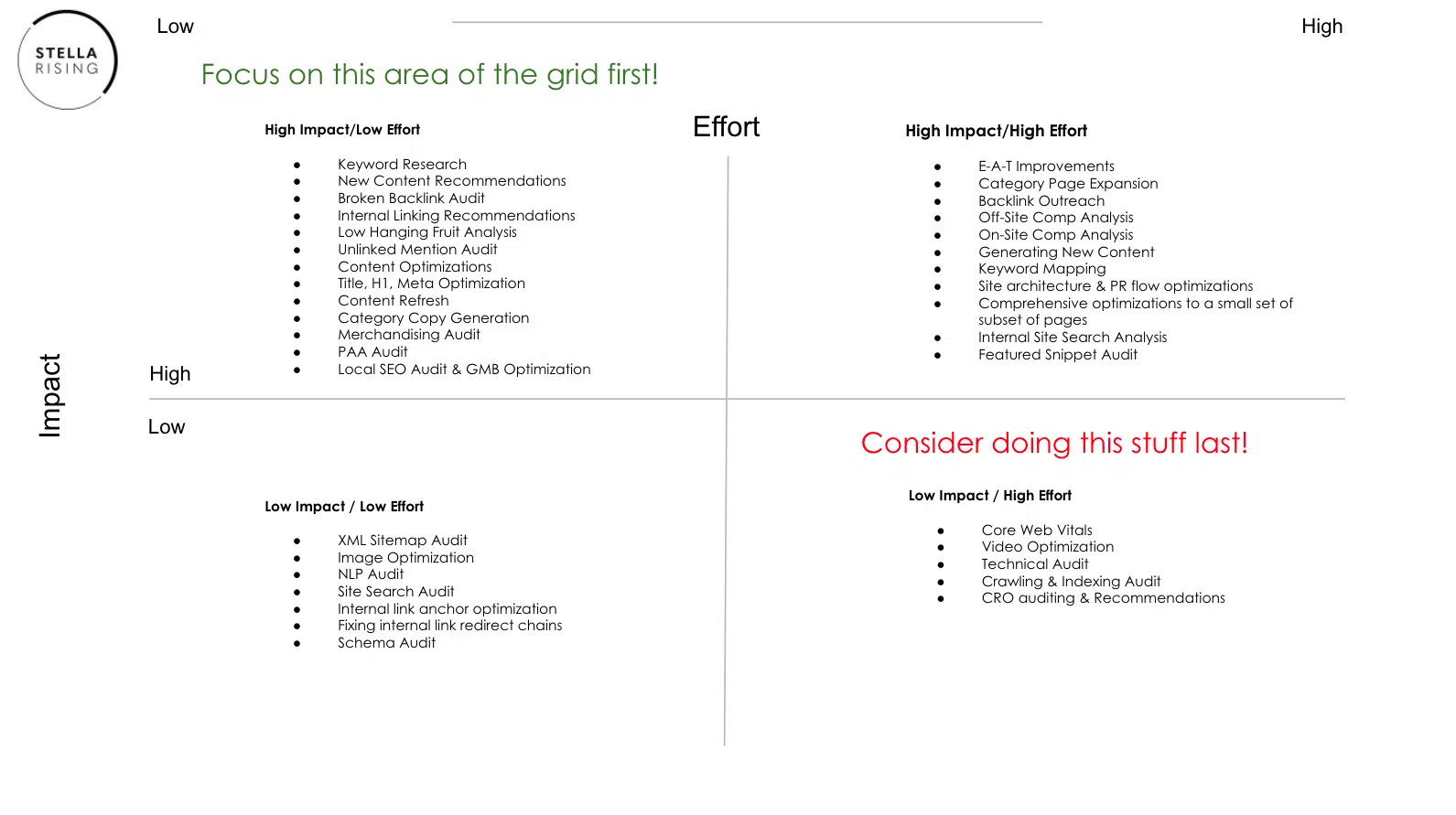How to get faster SEO results
Here’s how agile SEO techniques and tools can help accelerate growth, prioritize effectively and produce returns faster.
Many SEO professionals have been asked by managers or clients, “How long does SEO take?”
Usually, the answer is “Somewhere between 4-12 months.” In some cases, it can take as long as 24 months to see a significant return on investment.
This article discusses ways to get SEO results faster through what the late and great Hamlet Batista called “agile SEO.”
The need for speed
Businesses want returns on their marketing investment sooner rather than later, especially given ongoing supply chain issues, a looming economic downturn and increased labor costs.
Getting results faster than others gives you a competitive edge whether you do SEO in-house or as an agency partner.
Stop doing checklist SEO
One common mistake SEOs make is practicing “checklist SEO.”
This method assumes that to have a well-optimized site, you must check all the boxes in an exhaustive list of best practices and site diagnostics. It also implies that all sites need the same work, which is often untrue.
Checklist SEO is generally not a great approach to SEO. You always need to consider the varying impact and difficulty of each box you’re seeking to check off so that you can prioritize effectively.
Instead of checklist SEO, use the SEO Eisenhower grid
The SEO Impact Eisenhower grid is something our agency developed to prioritize client SEO tactics and efforts based on their expected difficulty and impact. Focusing on work that has proven to be impactful is critical for accelerating client growth.
Make your own SEO Impact Eisenhower grid to better understand what work you should focus on.
The grid consists of four quadrants:
- Top: Higher-impact items.
- Bottom: Lower-impact items.
- Left: Lower-effort items.
- Right: Higher-effort items.
What items would you place in the top left and right (high impact)?
What items would you place on the bottom (low impact)?
Look at the bottom and ask, do we even need to do all of these things in the first 3-6 months of this campaign?
You should plan to examine all opportunities over a year or so, but focusing on high-impact items first will help you achieve faster SEO results.
In this exercise, the aim is to identify those high-impact, lower-effort items and address those first.
Add any ideas you come up with that may be helpful, even if they are higher effort or lower impact, but consider saving them for later on in your SEO campaign.

Many SEOs start with an exhaustive technical and full site audit. While this sounds like a good plan, it may not be the best approach in most situations.
Many smaller sites built on Shopify, WordPress or other common CMS platforms have a limited number of technical issues. Their issues are often the same and can be identified and addressed without a full audit.
Sometimes the things we find in technical audits are “nice to haves” and align with best practices but are often difficult to implement and may not have a measurable impact on every website.
Technical SEO is critical for larger websites and some smaller sites. However, it’s rarely the first thing you should focus on. The exception is when there are indexing or crawl ability issues that would prevent on-page optimization or new content creation from being impactful.
Often, the more technical recommendations that require development time aren’t implemented or sit in a queue for months.
I’m not saying that technical audits are worthless. Quite the contrary.
You should absolutely do that type of work on any site you are trying to help grow. But always start with low-effort, high-impact initiatives.
For example, unless the site is not being crawled at all or is set to noindex, you’d probably get more lift out of doing keyword research, title and meta optimizations and creating new content than you would out of working on fixing a bunch of tech debt like old redirected internal links or optimizing page speed.
Why do so many SEOs start there?
The graphic below exemplifies what we have listed in our SEO Impact Grid based on the deliverables we execute at our agency. These are examples of tactics and their relative effort and impact. These are meant to serve as examples and may differ for every site or industry.

In this example, I was also thinking of what we know to be a direct ranking factor through our own experience or what Google stated is a confirmed ranking factor. Sometimes, that also means critically examining what Google has said about various factors.
For example, Core Web Vitals as a ranking signal. Google beat their drum about this like it would shake up the SERPs in a big way, but the impact has not been that large. Algo-watchers like Glenn Gabe have some interesting data on the true impact.
